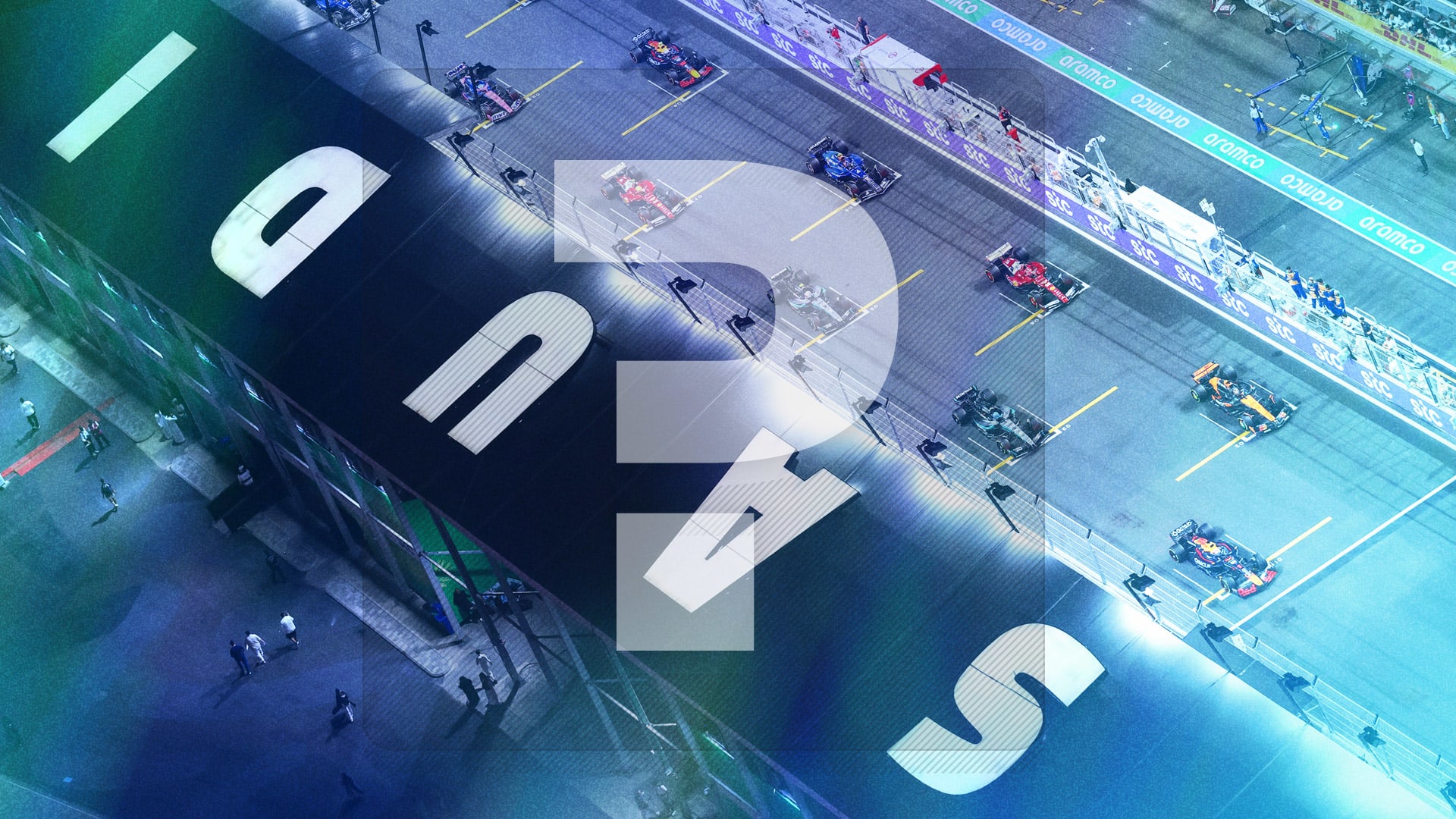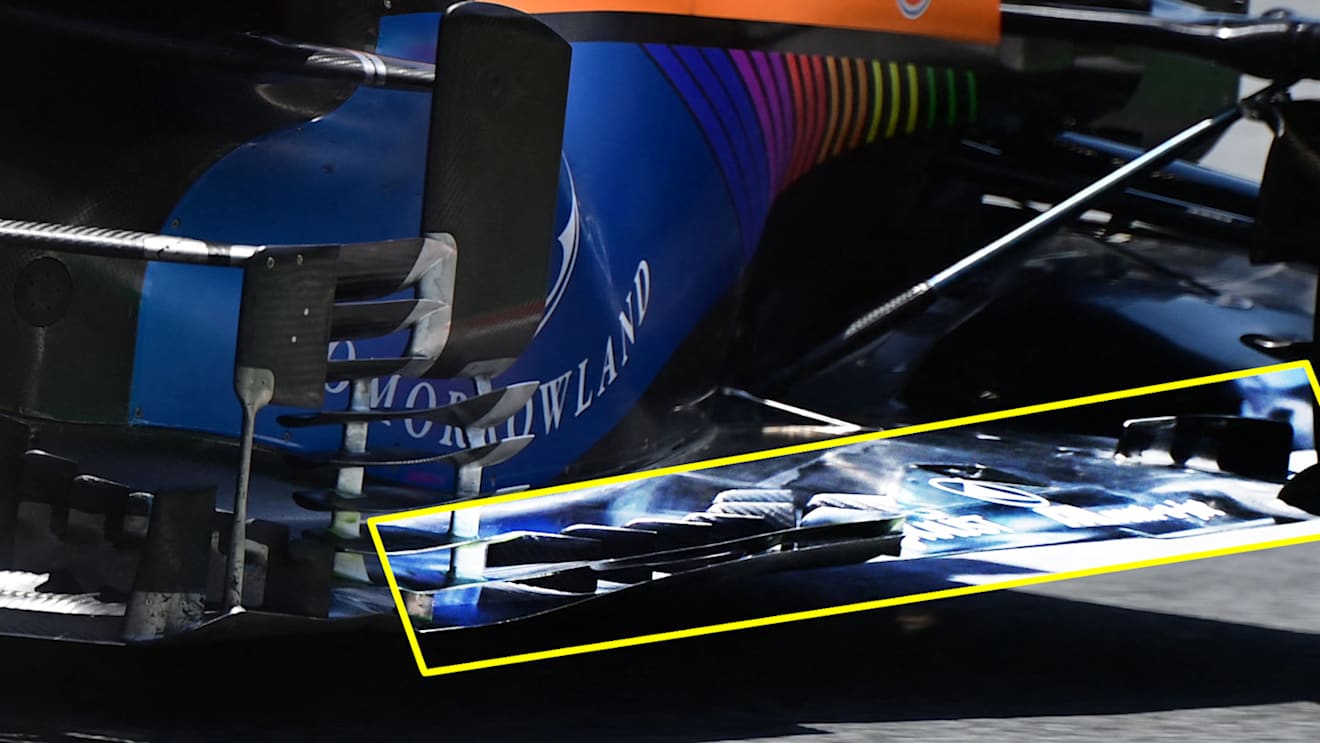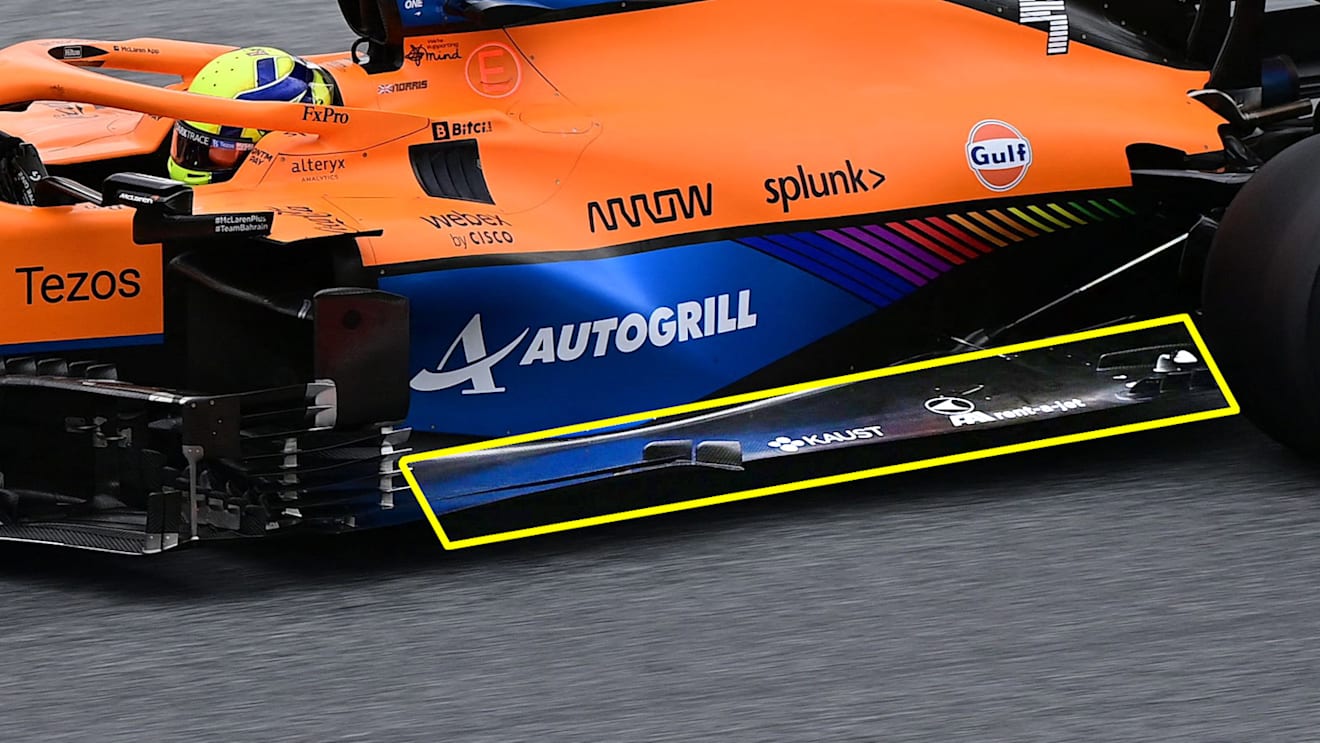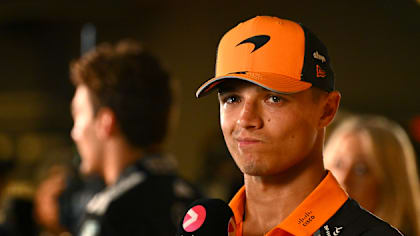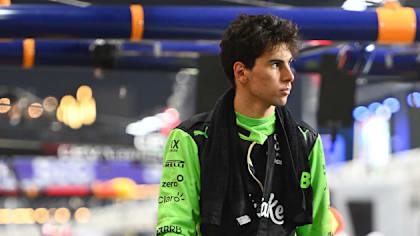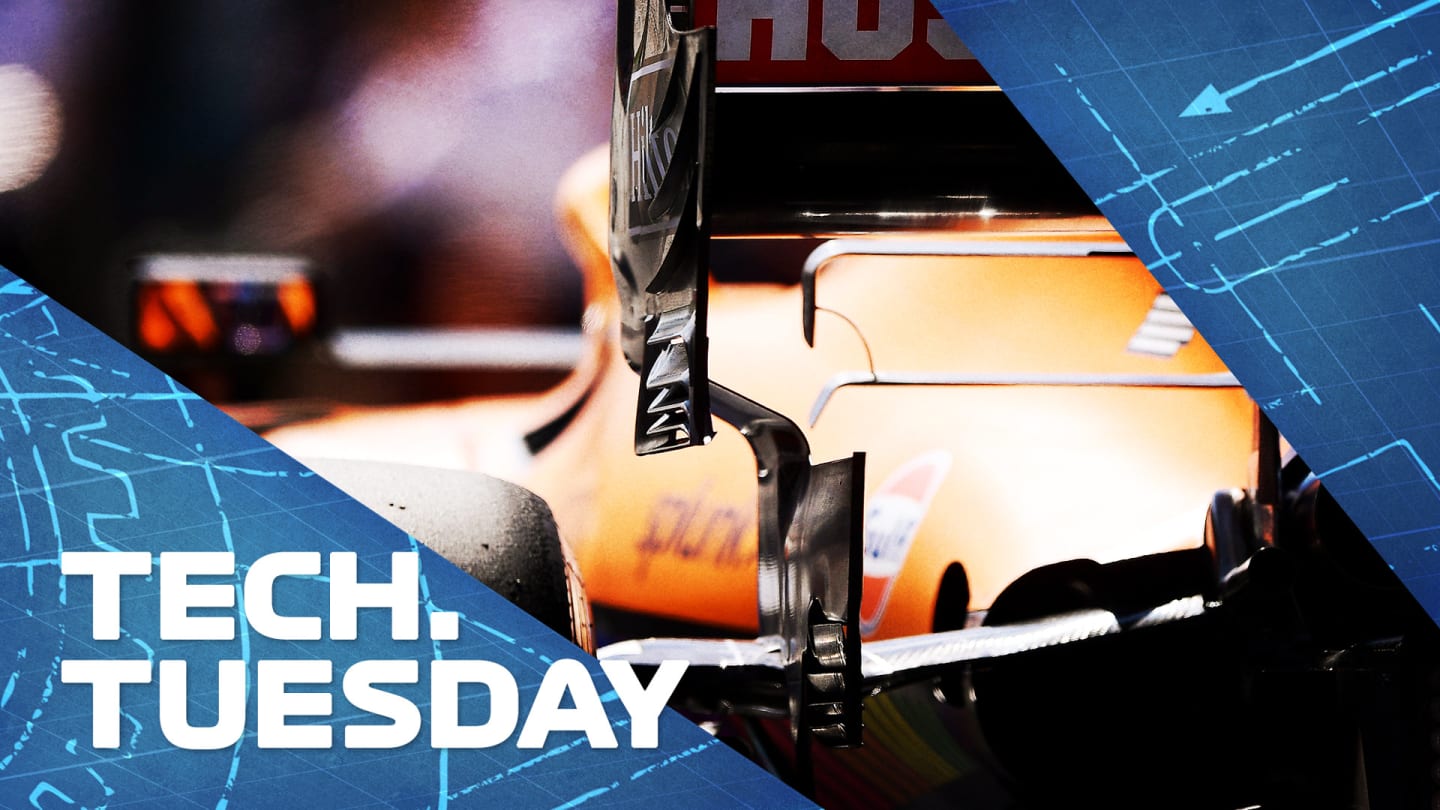
Technical
TECH TUESDAY: The unorthodox rear wing helping McLaren mix it with Mercedes and Red Bull

Share

McLaren have made impressive gains of late – to the point that Lando Norris was able to challenge Max Verstappen’s Red Bull for pole in the Austrian Grand Prix and then run at Mercedes' pace in the race on his way to third place. In this week's Tech Tuesday, Mark Hughes looks at how the team are extracting more pace from the MCL35M, with technical illustrations from Giorgio Piola.
There’s reason to believe that the Red Bull Ring is particularly favourable to the very strong DRS stall characteristic of the McLaren’s rear wing (which has a relatively small main plane and big flap) on a circuit at which the DRS zones represent an untypically big proportion of the lap, helping the car to qualify well (DRS can be used in free air in qualifying).
But even disregarding that, the team seems to be on a productive development curve with the car, with new parts appearing regularly since France.
The first of this tranche of parts was the new rear wing endplate which made its first appearance at Paul Ricard. This is highly distinctive in that the slots in the lower part of the endplate are horizontal rather than the conventional vertical.
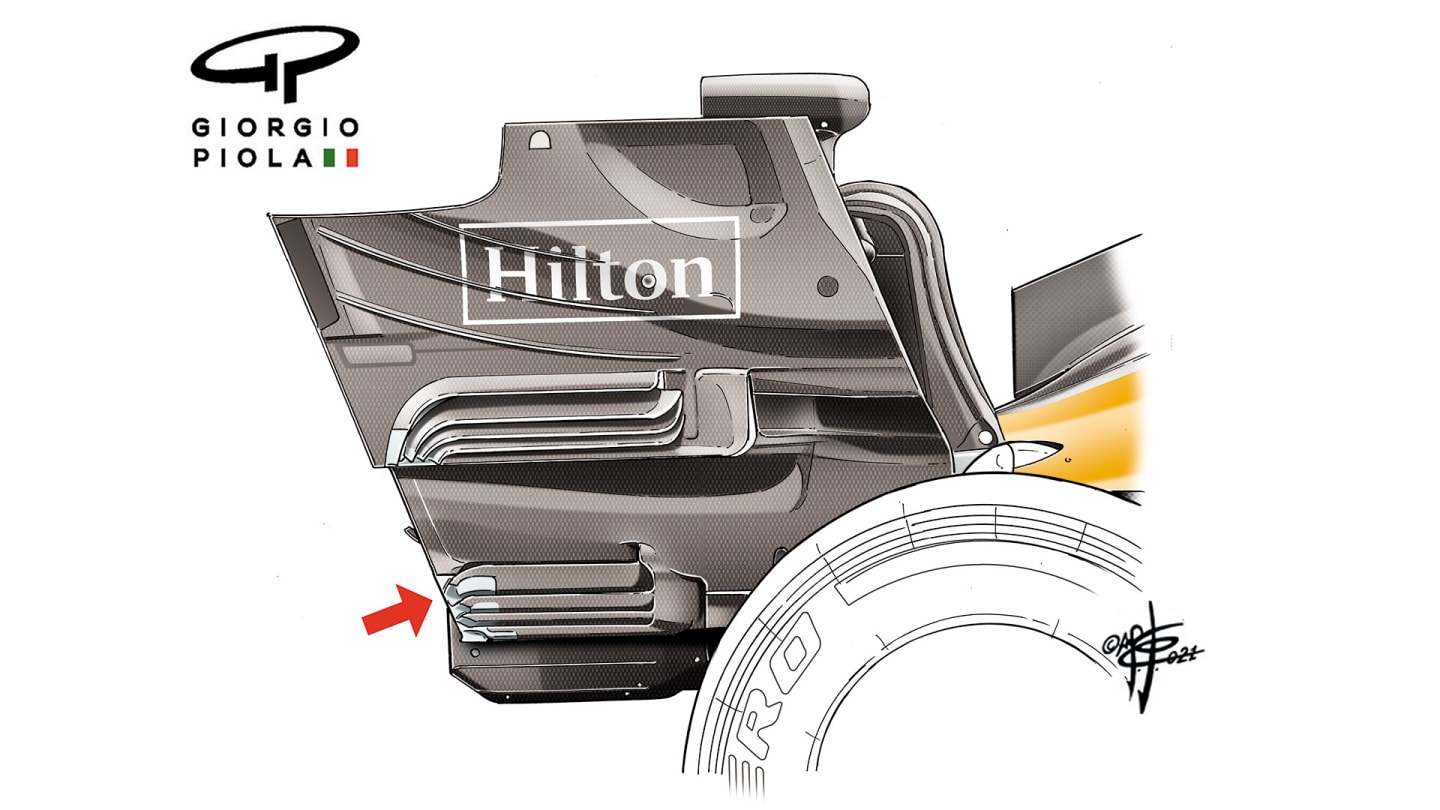
The new rear-wing endplate on the McLaren MCL35M, which first appeared at Paul Ricard
The endplate slots in this aerodynamically complex part of the car are there to optimise the airflow between the diffuser and rear wing. They are manipulating the air pressure to give the best overall compromise in the performance of the two downforce-producing components. How fast the air can be induced to exit the diffuser (sometimes referred to as the expansion rate) determines how much downforce the underbody produces.
But maximising that can have an adverse effect on the performance of the wing, starving the outboard ends of airflow as the flow on the wing’s underside is drawn towards the centre by the low pressure of the air exiting the diffuser below. The slots allow the two flows to merge more sympathetically, by drawing some of that air exiting the diffuser out wider.
McLaren uniquely changing these slots from vertical to horizontal suggests it has been seeking a different characteristic across a range of ride heights and attitudes. It may be that this gives a better compromise through more of the running conditions the car sees. The McLaren’s relatively small main plane may have made the wing prone to difficulties when not in DRS mode.
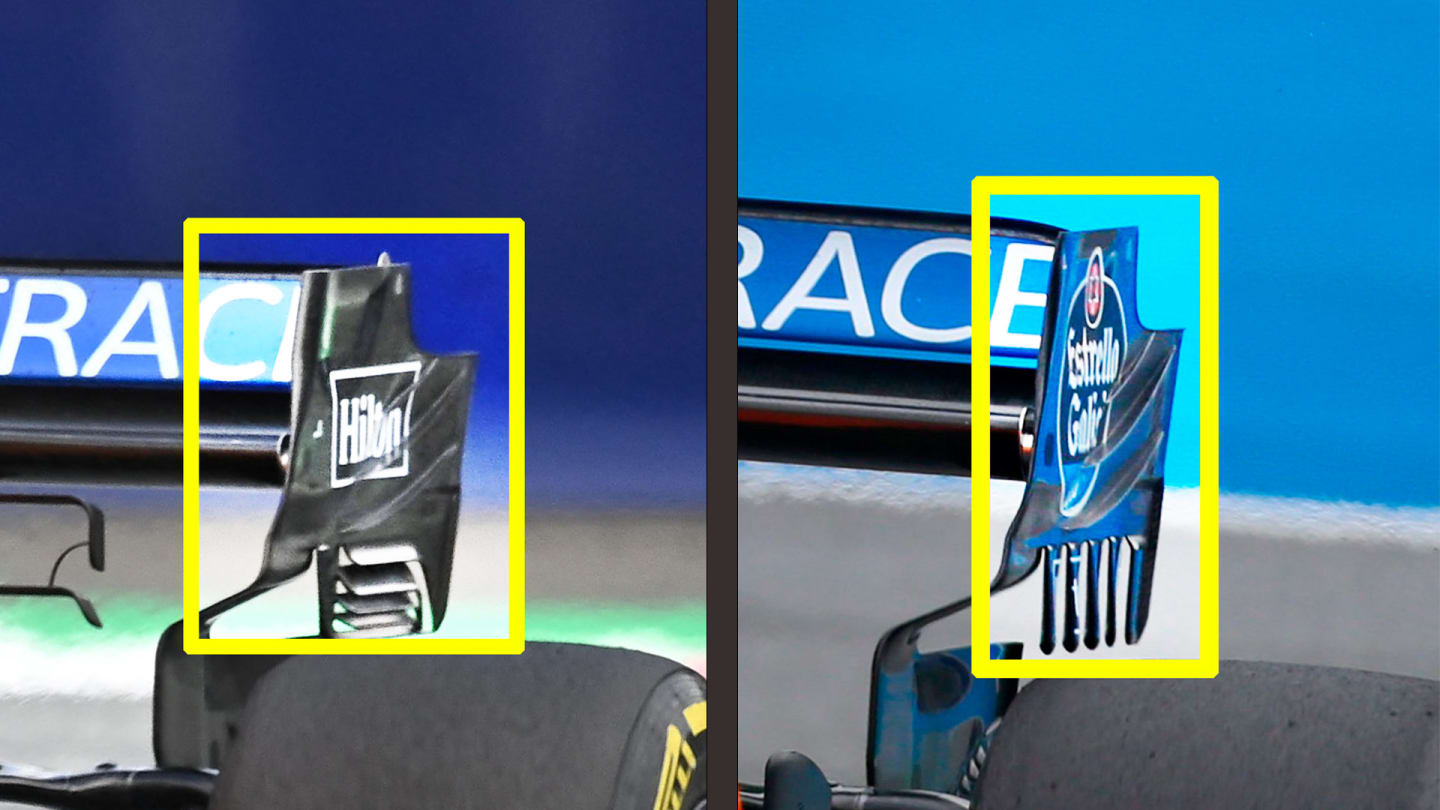
The new wing (L) and the old wing (R) with slots changed from vertical to horizontal
The fact that it has this unique solution may also be connected to its uniquely-configured diffuser, whereby the strakes around the central 500mm form the walls of the central tunnel. In other cars the central tunnel is wider, preventing by regulation the strakes being as long, as they can only extend down as far as they do on the McLaren in the central 500mm. The flow generated by McLaren’s unique diffuser may well have led to the unique horizontal endplate slots.
That unique diffuser design may also be behind McLaren’s outer floor tweak, which appeared for the second Austria race, whereby the previous Z-floor proportions were softened and an impressive array of tiny guide vanes were added around the Z on the edge of the floor.
As discussed in previous Tech Tuesdays, the Z-shaped cut-out induces vortices which help pressure-seal the outer edges of the floor, allowing the main part of the floor to suck the car down harder. But creating that Z-shape by definition robs the floor of some downforce-producing surface area.
READ MORE: What is the ‘Z-shaped’ floor solution – and why are more and more teams using it?
McLaren switched to the Z floor in Spain but have now reduced the extremity of the Z, giving it back some floor area. The array of vanes around the Z will be to boost the strength of the vortices around the less-enhanced Z.
1 / 2
McLaren – with a unique diffuser and unusually configured rear wing as hard points of the MCL35M’s basic design – are consequently going very much their own way on development and the car is proving highly responsive to it.
It’s going to be fascinating to see if there is more to come and whether the car’s Austria form can be sustained.
READ MORE: McLaren explain thinking behind their unique diffuser design
YOU MIGHT ALSO LIKE
FeatureF1 Unlocked IT'S RACE WEEK: 5 storylines we're excited about ahead of the 2025 Miami Grand Prix
News ‘I need to chill out’ – Norris opens up on early-season mindset as he admits to putting ‘too much pressure on myself’

Feature Theme park fun, discos with Russell and architect dreams – Getting to know the real Kimi Antonelli
News Bortoleto ‘didn’t see’ Alonso during close shave in Jeddah as Kick Sauber struggle to take positives from difficult weekend
